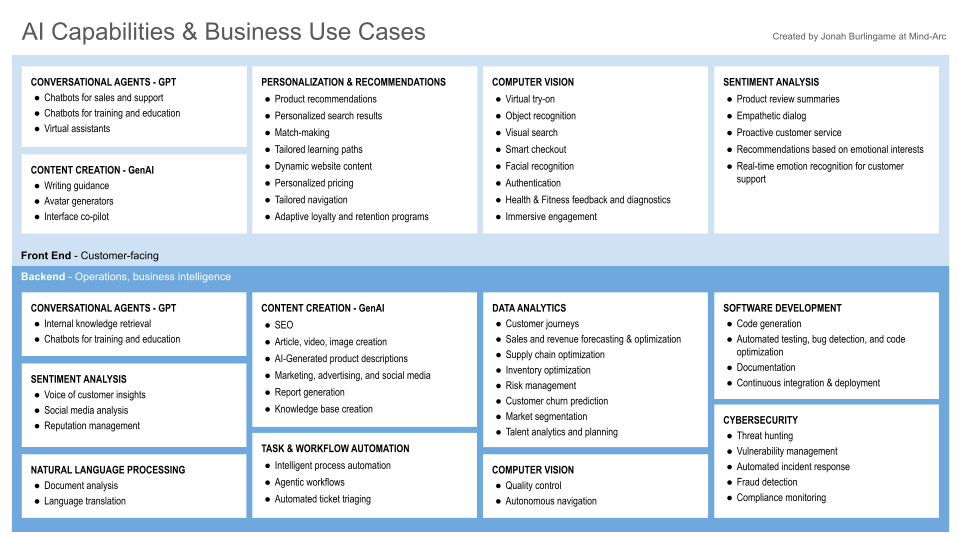
May 12, 2025 | AI
Given the insane adoption curve of GenAI tools like ChatGPT, Perplexity, and Claude, chances are you’ve already already experimented with these single-use AI assistants. But the real breakthrough isn’t just about using one smart tool-it’s about orchestrating multiple AI agents to work together in real time. Welcome to the era of agentic AI.
Most people still experience these tools as black boxes: you type in a prompt, you get an answer, and you rarely see how the sausage is made. But beneath the surface, a radical shift is happening. Some of these platforms are quietly evolving into sophisticated, multi-agent systems-if you’re not watching closely, you might miss the transformation.
To make this tangible, I’ve created a 𝘀𝗶𝗺𝗽𝗹𝗶𝗳𝗶𝗲𝗱 𝗶𝗹𝗹𝘂𝘀𝘁𝗿𝗮𝘁𝗶𝗼𝗻 𝗼𝗳 𝗮𝗴𝗲𝗻𝘁𝗶𝗰 𝗔𝗜 𝗮𝗿𝗰𝗵𝗶𝘁𝗲𝗰𝘁𝘂𝗿𝗲, (this architecture is based on the MAESTRO framework, designed with security in mind).
Unlike traditional automation, where every step is rigidly defined, agentic AI enables dynamic collaboration. In its most intelligent configuration, the AI is context-aware, with multiple AI agents coordinated across tools, workflows, and even departments-each acting semi-autonomously, and adapting in real time.
Here’s a practical executive scenario: Let’s say you’re a Chief Product Officer preparing for a board meeting. Instead of manually gathering data, agentic AI agents automatically pull the latest product metrics, summarize customer feedback from multiple channels, highlight emerging trends, track competitor activities, and flag any risks-delivering a tailored briefing to your inbox before your morning coffee.
Understanding this architecture is key to unlocking next-level productivity and innovation. The only real limit? Your imagination, and the ability to connect the right systems and data sources.
Agentic AI is transforming the way we work. What will your team of agents do for your business?

Feb 25, 2025 | AI, Innovation
AI is transforming 𝗰𝘂𝘀𝘁𝗼𝗺𝗲𝗿 𝗲𝘅𝗽𝗲𝗿𝗶𝗲𝗻𝗰𝗲𝘀, 𝗼𝗽𝗲𝗿𝗮𝘁𝗶𝗼𝗻𝘀, 𝗮𝗻𝗱 𝗱𝗲𝗰𝗶𝘀𝗶𝗼𝗻-𝗺𝗮𝗸𝗶𝗻𝗴—but are we thinking about its full potential holistically?
I’ve been mapping out AI’s capabilities across front-end (customer-facing) and back-end (operations & intelligence) use cases. It’s not meant to be exhaustive—but rather a starting point to spark discussion among senior business leaders about AI’s role in driving value.
From GPT-powered conversational agents to cybersecurity automation, from personalized recommendations to AI-driven forecasting, this framework lays out where AI is making an impact today—and where opportunities might still be untapped.
 𝗜’𝗱 𝗹𝗼𝘃𝗲 𝘆𝗼𝘂𝗿 𝗶𝗻𝘀𝗶𝗴𝗵𝘁𝘀!
𝗜’𝗱 𝗹𝗼𝘃𝗲 𝘆𝗼𝘂𝗿 𝗶𝗻𝘀𝗶𝗴𝗵𝘁𝘀!
• Am I missing key categories or use cases?
• How are you leveraging AI in ways that aren’t widely discussed yet?
This is a 𝘄𝗼𝗿𝗸 𝗶𝗻 𝗽𝗿𝗼𝗴𝗿𝗲𝘀𝘀, and your input will help refine a more comprehensive view of AI’s evolving role in business.
#AI #ArtificialIntelligence #BusinessStrategy #Leadership #DigitalTransformation #AIUseCases #Innovation

Jan 20, 2025 | AI, Innovation, Strategy
𝗧𝗵𝗲 𝗳𝗶𝗿𝘀𝘁 𝗿𝗶𝗽𝗽𝗹𝗲𝘀 𝗼𝗳 𝘁𝗵𝗲 𝗔𝗴𝗲𝗻𝘁𝗶𝗰 𝗔𝗜 𝗮𝗿𝗲 𝗯𝗲𝗴𝗶𝗻𝗻𝗶𝗻𝗴 𝘁𝗼 𝗿𝗲𝗮𝗰𝗵 𝘀𝗵𝗼𝗿𝗲, bringing transformative changes to how we interact online. There are impressive examples of AI-powered assistants helping job seekers craft resumes and fill applications, to intelligent travel planners curating personalized itineraries via natural voice interaction. You’d be forgiven to think you’re already experiencing these capabilities with the latest LLMs, but this next evolution of AI is a significant leap forward of the technology. These autonomous agents can analyze data, set goals, and take action to achieve them.
Beneath the surface, these AI agents will catalyze a seismic shift in how businesses operate. We’re entering the “agentic era” of digital connectivity. This new paradigm is not just about enhancing user interfaces; it has major implications on backend operations, data integration, analytics, customer service, privacy considerations, and much more. It is likely to be a messy landscape behind the scenes as established SAAS platforms seek to maintain their value with added AI features, while business leaders seek to break down data silos for greater insights by implementing Agents that can work across those platforms.
For CPOs, CTOs, and startup founders, this isn’t just a technological shift—it’s a strategic revolution. Agentic AI will:
✓ Break down data silos
✓ Optimize operational workflows
✓ Provide unprecedented analytical insights
✓ Revolutionize customer experiences
As professionals, we must ask ourselves: How will these AI agents redefine our roles? What new skills will we need to thrive in this AI-augmented landscape? And most importantly, how can we harness this technology to create more value for our organizations and customers?
The future is here, and it’s powered by AI. Are you ready to ride this wave?
#GenerativeAI #FutureOfWork #DigitalTransformation

Jul 15, 2024 | AI, Innovation
Over the past few days, I’ve been working on a side project that left me questioning the very core of prompt engineering.
A friend pitched an idea for a game: players need to find food-related anagrams within a recipe title. He’d need hundreds of recipes and their associated anagrams. Seemed like a perfect use case for AI, right? My goal was to generate a few hundred recipe titles with their corresponding anagrams. I tried using increasingly complex, multi-step prompts, which brought me to the limitations of my prompt engineering skills. The results were disappointing, full of inaccuracies and undesirable results.
Out of frustration, I took a different approach. I asked the LLM (Large Language Model) itself for the prompts necessary to produce the results I wanted. The LLM provided an 8-step prompt sequence which showed me a few steps I had missed. Out of curiosity, I responded, “OK, do those steps,” and the results were astounding. Within seconds, I had 100 accurate recipe titles with their food-related anagrams.
This experience leads me to ponder: Is the skill of prompt engineering dead? If an AI can provide the optimal prompts itself, why would we need to invest the time to become good prompt engineers? I realize that this is provocational. Obviously I had to employ an intermediate level of prompt engineering to receive the correct steps, but it’s clear that the ability to formulate good questions remains an essential skill no matter if we are working with people or AI.
As we stand on the frontier of AI, it’s essential to continuously question and redefine our approaches. This experiment has shown me that sometimes, the best results coming from asking a simple question.
#AI #Innovation #ProductLeadership #PromptEngineering #FutureOfAI

Apr 15, 2024 | AI, Design, Innovation, Strategy
Today, Scott Belsky‘s latest insights in the Implications newsletter resonated deeply with me. He discusses a future of brands increasingly deploying AI agents as the primary interface, potentially leading to a landscape of disparate self-serving experiences, each thirsty for your data. This raises an important question about the emergence of platform-level agents, personalized to negotiate on behalf of individuals based on their unique data and preferences.
Several years ago at Spring Studio, we explored a similar concept for the banking sector, envisioning a future where a chatbot evolves into an AI-enabled ‘companion’. Dubbed the ‘self-driving bank account’, this tool could autonomously manage funds to prevent overdrafts, optimize bill payments, and even advise on optimal timing for major purchases.
This evolution in digital interfaces could profoundly impact consumers, brands, and developers. As we navigate this shift, it’s crucial to consider how such innovations could redefine the customer journey, focusing on privacy, trust, loyalty, transparency, and interoperability.
What do you think the future holds for customer-brand interactions in an AI-mediated landscape?
https://lnkd.in/g9-S-TUJ
#AIBranding #CustomerExperience #DigitalBanking #FutureOfAI #BrandInnovation #TechTrends #AICompanions



 𝗜’𝗱 𝗹𝗼𝘃𝗲 𝘆𝗼𝘂𝗿 𝗶𝗻𝘀𝗶𝗴𝗵𝘁𝘀!
𝗜’𝗱 𝗹𝗼𝘃𝗲 𝘆𝗼𝘂𝗿 𝗶𝗻𝘀𝗶𝗴𝗵𝘁𝘀!

